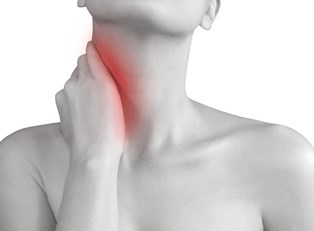Common Neck Pain Causes
Neck pain is extremely common, but that doesn’t mean it’s easy to live with. Neck pain can be chronic, occasional, or—for a lucky few—once in a blue moon. Frequency often depends on the cause of your neck pain and choosing appropriate treatment options. Here is a look at some common factors that may be causing your neck pain.
Stress
The world around you can have a major impact on your body. Stress can not only raise your blood pressure and cause cognitive difficulties, but it can turn into a physically painful burden as well. The musculoskeletal system is also impacted by the stress you undergo. This doesn’t mean that every person facing stress has the same neck pain—people tend to carry their stress in different places. It could be the lower back, in the shoulders, or even having migraines. For some, stress-related pain nestles right in the cervical region of the spine, tightening up those muscles and pulling on the sensitive tissue.
Posture
The way you move and hold yourself can also result in neck pain. Emily Post’s posture recommendations aren’t just a suggestion for being proper. The goal is to keep your body properly aligned from neck to tailbone so that the bones and muscles don’t suffer any excess tension. Examples of postures that can lead to neck pain include:
- Slouching while sitting or standing
- Standing with your chest or butt thrust out
- Keeping your back too flat
- Leaning to one side (particularly because of a heavy purse or bag)
- Hunching over
- Thrusting your chin out
- Keeping her head cocked to the side (like when cradling a phone)
Even your sleeping position could be causing pain, particularly if your mattress or a pillow are inappropriate for your style of sleeping.
Pinched Nerves
A pinched nerve in the cervical region of the spine can cause sharp neck pain and tingling. Pinched nerves occur when bone, cartilage, or other tissue press on the nerve, nerve root, or myelin sheath, interrupting the brain-to-nerve signal. A pinched nerve can fully heal given time and rest. However, if the nerve is overworked or not properly rested, it can cause permanent damage.
Anatomical Conditions
Anatomical issues can also play a huge role in causing serious neck pain. A herniated disc occurs when the soft cushioning between discs leaks out of its exterior. Bone spurs are small growths of bone that develop over time. Degenerative disc disease is a condition in which the spine progressively herniates and essentially begins fragmenting. Spinal stenosis refers to a spinal column that grows smaller, crowding the nerves. The sooner you seek medical help for these types of conditions, the more effective treatment is likely to be.
Trauma
Trauma can be a source of severe neck pain. Whiplash refers to a specific traumatic movement where the head and neck are “whipped” forward and then forcefully “whipped” backward, most commonly from rear end traffic accidents. Whiplash can injure bones, muscles, ligaments, and various other tissues in the neck. Spinal fractures in the neck can also cause pain and are much harder to fix than a fracture elsewhere on the body. If you’ve been experiencing worsening neck pain that isn’t helped by at-home treatments, visit your doctor to figure out exactly what’s wrong and what your optimal treatment options are.




